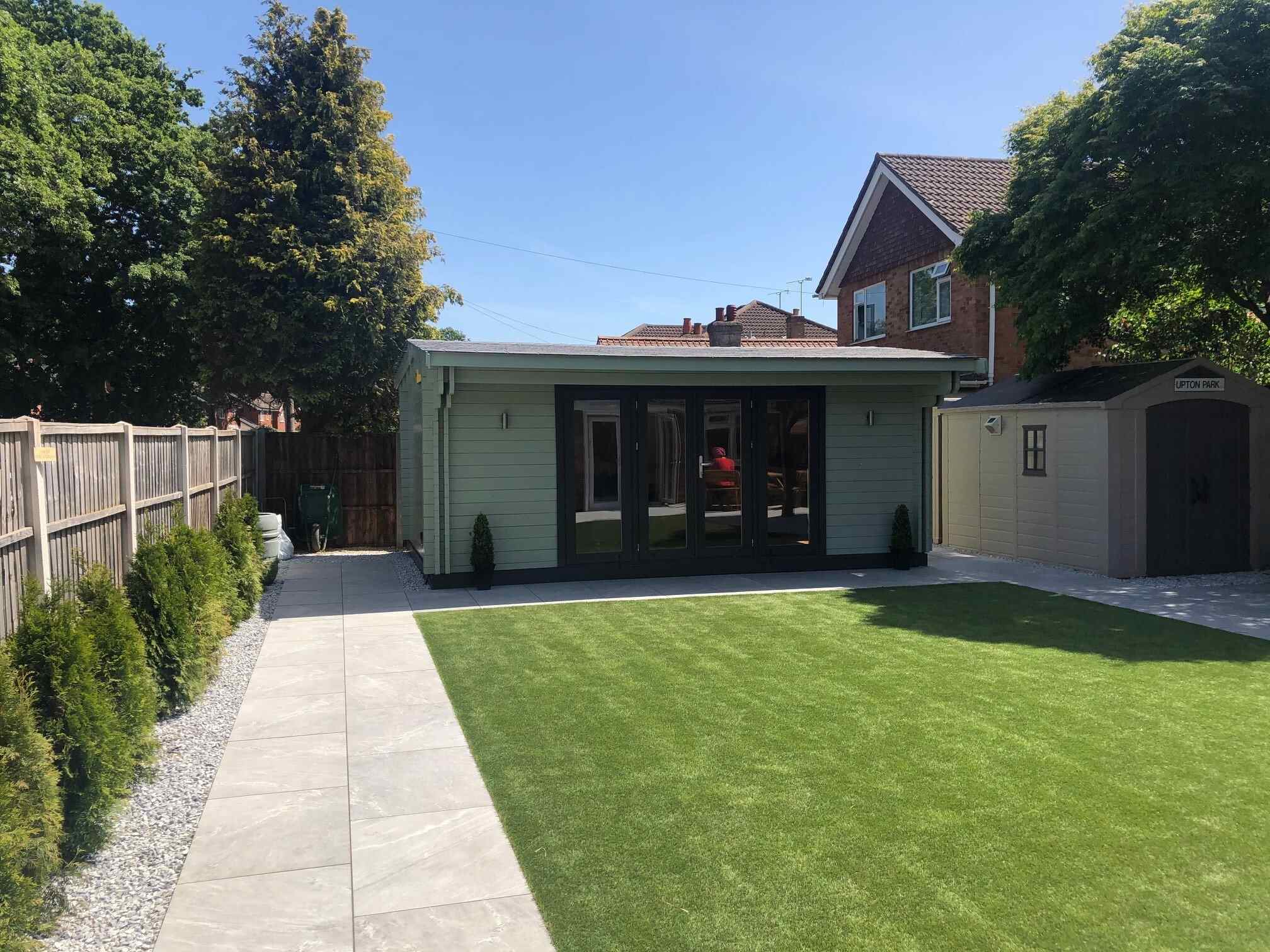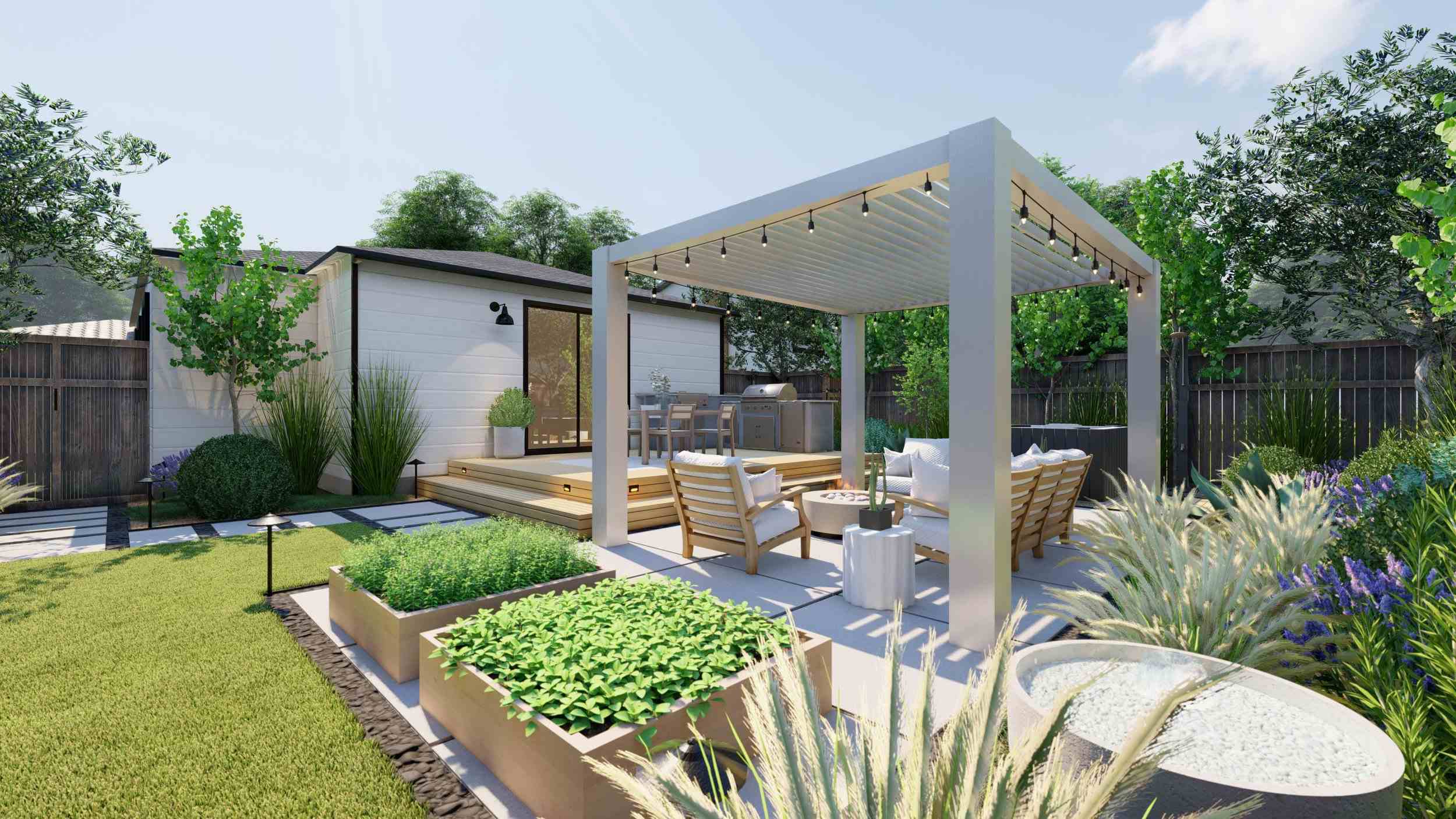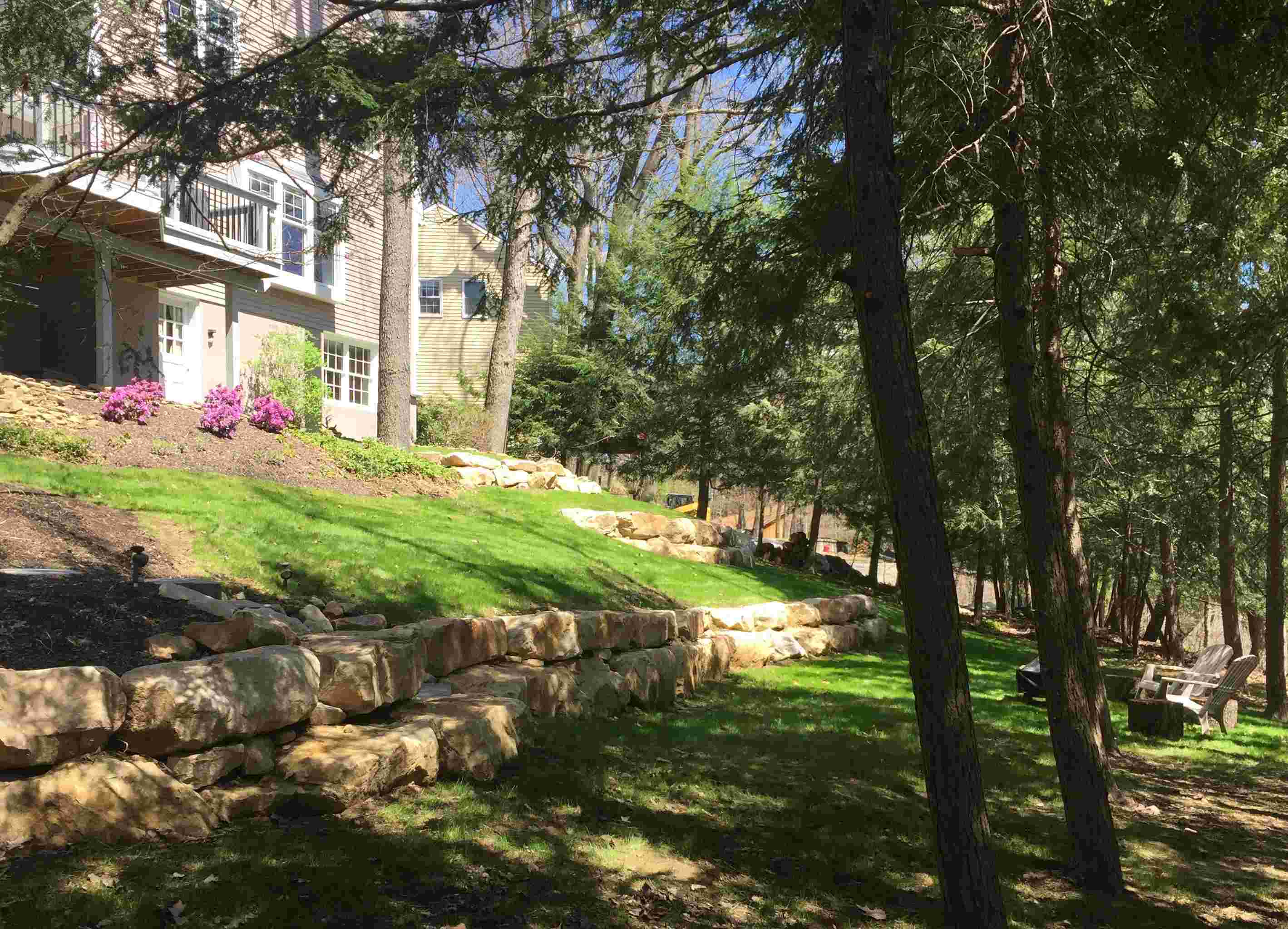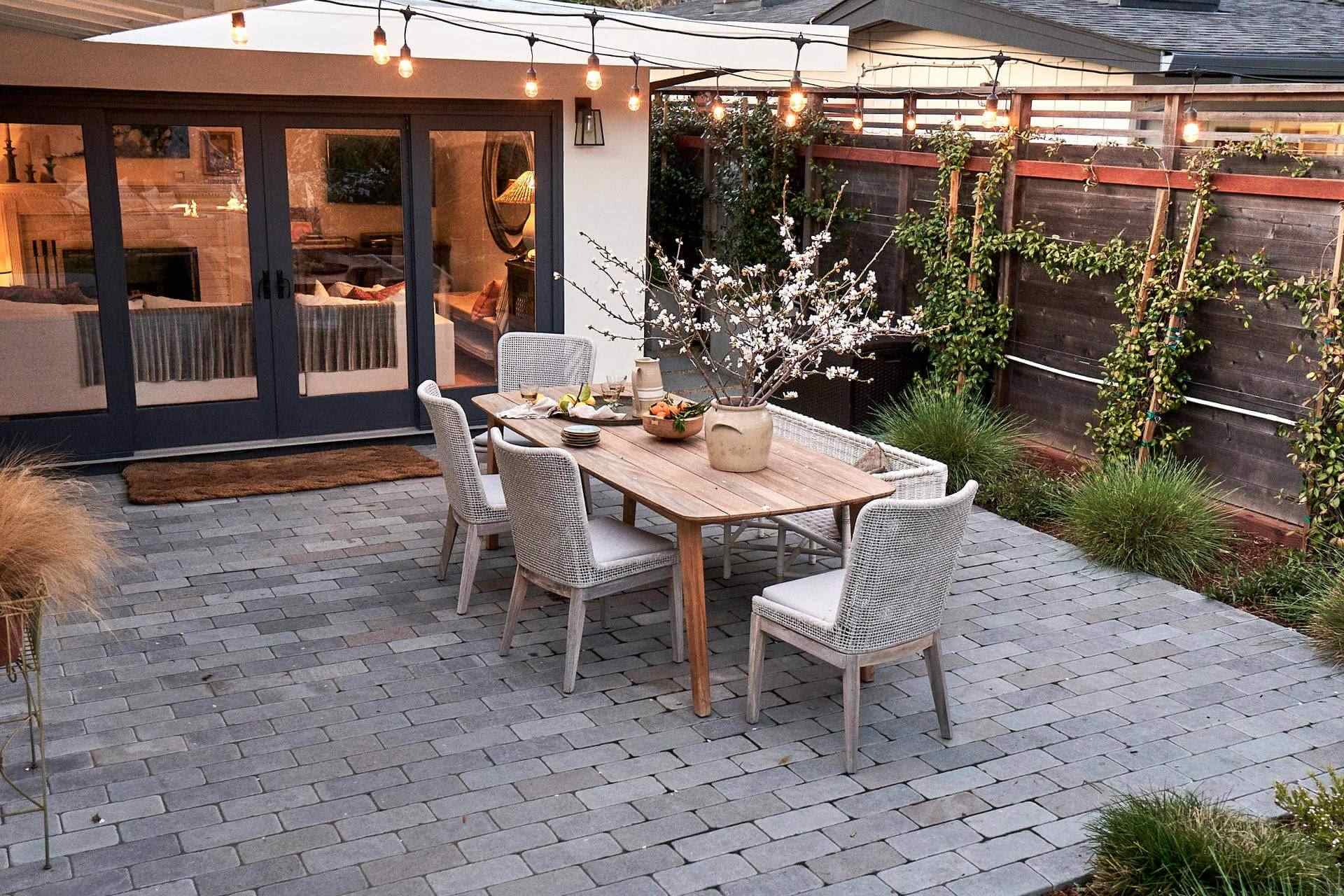Home>Garden Design>How To Decorate A Backyard
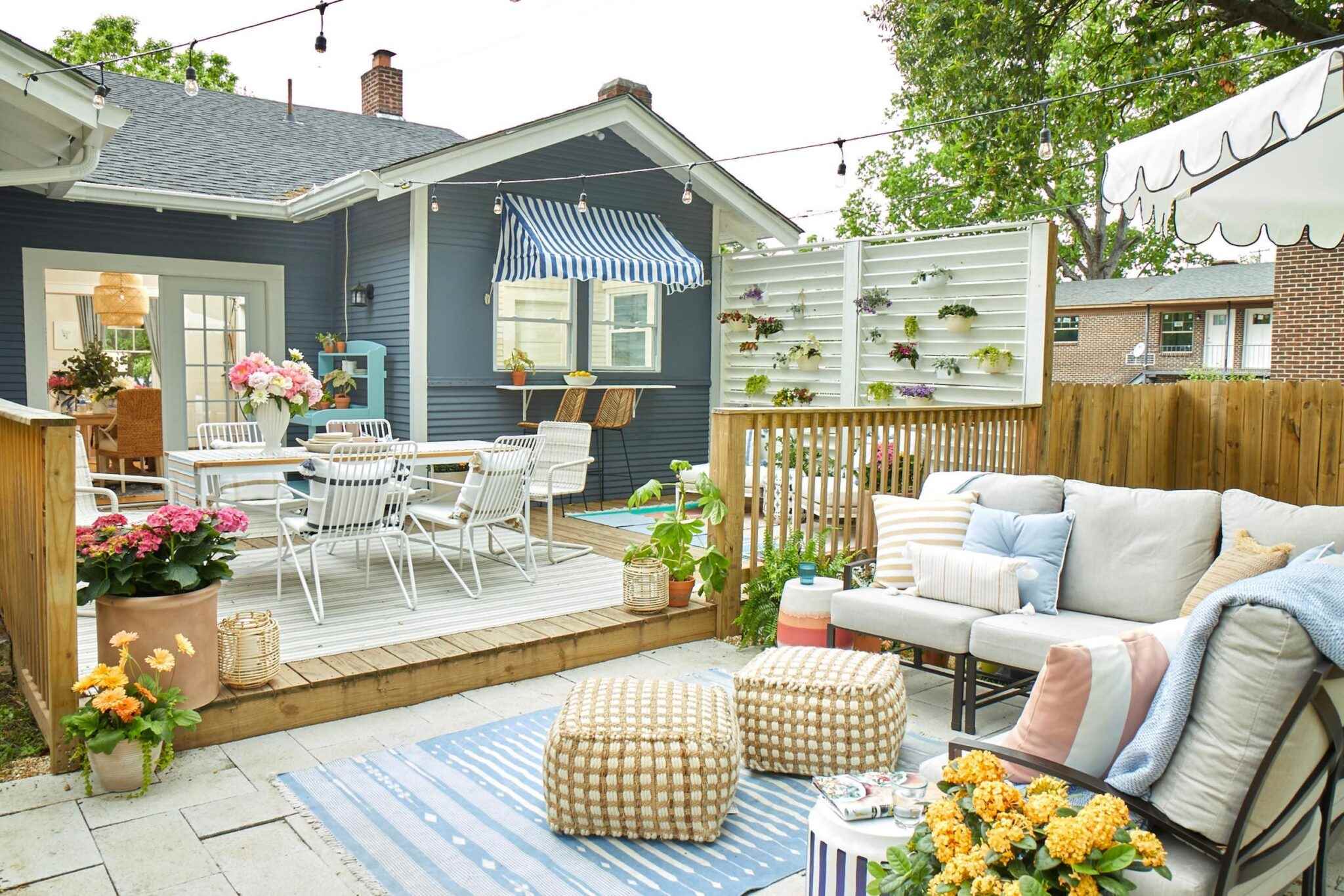

Garden Design
How To Decorate A Backyard
Modified: January 22, 2024
Learn how to transform your backyard with stunning landscape design ideas. Create a beautiful outdoor oasis with expert tips and inspiration.
(Many of the links in this article redirect to a specific reviewed product. Your purchase of these products through affiliate links helps to generate commission for Chicagolandgardening.com, at no extra cost. Learn more)
Table of Contents
Introduction
Welcome to the world of landscape design, where creativity and nature come together to transform ordinary outdoor spaces into extraordinary havens. Whether you have a sprawling backyard or a cozy patio, designing and decorating your outdoor area can greatly enhance its beauty and functionality. From planning and layout to selecting the right elements and features, this article will guide you through the process of creating a stunning and inviting backyard retreat.
A well-designed backyard not only adds aesthetic value to your property, but it also provides a space for relaxation, entertainment, and connection with nature. Whether you dream of an oasis filled with lush greenery, a cozy outdoor lounge area, or a vibrant play zone for your children, the possibilities for transforming your outdoor space are endless.
By carefully considering your needs, preferences, and the overall style of your home, you can create a backyard that reflects your personality and enhances your lifestyle. Whether you are starting with a blank canvas or seeking to renovate an existing space, this article will provide you with the inspiration and guidance to turn your vision into a reality.
Throughout this article, we will explore various aspects of backyard design, including planning and layout, defining zones, selecting outdoor furniture and seating, integrating lighting, incorporating greenery and plants, adding outdoor structures and features, incorporating decorative accents and accessories, incorporating entertainment and recreation options, and ensuring proper maintenance and upkeep.
So, let’s dive into the world of backyard design and discover the secrets to transforming your outdoor space into a breathtaking oasis that you and your loved ones can enjoy for years to come.
Step 1: Plan and Design
Before you begin transforming your backyard, it’s essential to have a well-thought-out plan and design in place. This step forms the foundation of your project and helps ensure a cohesive and harmonious outdoor space.
Start by assessing your backyard’s size, shape, and existing features. Consider any natural elements like trees, slopes, or water features that can influence the layout and design. Take note of any challenges or opportunities that may arise from the existing conditions.
Next, determine the purpose and functionality of your backyard. Are you looking for a space to entertain guests, a relaxing oasis, or a play area for children? This will help you prioritize elements and features that align with your vision.
Consider how you will utilize the different areas of your backyard. Divide the space into zones, such as a dining area, a lounge area, a play area, or a garden. This will help create a sense of organization and make the best use of the available space.
Take inspiration from various sources, such as magazines, online platforms, or even visiting botanical gardens or other beautifully landscaped spaces. Look for design styles that resonate with you, whether it’s tropical, modern, rustic, or minimalist. Gather images and ideas that capture your desired aesthetic and use them as a reference throughout the design process.
Incorporate your personal style and preferences into the design. Consider color schemes, textures, and materials that you find appealing. Whether you prefer bold and vibrant or soft and neutral tones, choose elements that create a cohesive and visually pleasing look.
Finally, create a detailed plan and layout for your backyard, taking into account the dimensions and measurements of the space. This plan can be as simple as a sketch or as detailed as a digital rendering. It should include the location of different zones, pathways, seating areas, and any other features you plan to incorporate.
Remember, the planning and design stage is the perfect time to enlist the help of a professional landscaper or landscape designer if you need expert guidance or assistance. They can bring fresh ideas, technical expertise, and valuable insights to help bring your vision to life.
With a well-executed plan and design in place, you are now ready to move on to the next step in creating your dream backyard.
Step 2: Define Zones
Creating distinct zones in your backyard is essential for optimal functionality and organization. By defining specific areas for different activities, you can maximize the use of your outdoor space and create a harmonious flow.
Start by identifying the different activities or purposes you want to accommodate in your backyard. This can include dining, lounging, gardening, playing, or even a dedicated space for pets. Assess how much space each activity requires and prioritize based on your needs and preferences.
Once you have determined the activities, you can divide your backyard into zones accordingly. Consider factors such as proximity to the house, access to sunlight, and privacy when determining the layout of each zone.
For example, designate a dining area for outdoor meals and entertaining. This can be achieved by placing a patio set or a dining table and chairs in a well-lit and accessible part of the yard. Consider adding features like a pergola or an umbrella for shade during sunny days.
Create a separate lounge area for relaxation and casual gatherings. This space can be filled with comfortable seating options such as outdoor sofas, lounge chairs, or hammocks. Incorporate elements like outdoor rugs, throw pillows, and side tables to enhance comfort and aesthetics.
If you’re an avid gardener, allocate a zone specifically for plants and greenery. Create raised beds or install planters to grow herbs, flowers, or vegetables. This area can also include a gardening workstation, storage for tools, and a water source.
For families with children, set up a play area with age-appropriate equipment like swings, a sandbox, a playhouse, or even a mini water feature. Ensure the space is safe and secure, with soft surfaces like rubber mulch or artificial turf to cushion falls.
Don’t forget to consider the transitions between zones. Create pathways or stepping stones to connect different areas seamlessly. This will not only enhance the flow of your backyard but also add visual interest and functionality.
Remember, defining zones in your backyard allows for efficient use of space and ensures that each activity has its dedicated area. It helps to create a well-organized and visually appealing outdoor retreat.
Once you have clearly defined your zones, you can move on to the next step of selecting outdoor furniture and seating that aligns with each designated area.
Step 3: Outdoor Furniture and Seating
One of the key elements in creating a comfortable and inviting backyard is selecting the right outdoor furniture and seating. The choices you make will not only enhance the aesthetics of your outdoor space but also determine the level of comfort and functionality it offers.
Start by considering the activities and functions of each zone you have defined in your backyard. This will guide you in selecting furniture that is suitable for different purposes.
In the dining area, prioritize a table and chairs that can accommodate the number of people you expect to host. Choose materials that are durable and weather-resistant, such as teak, aluminum, or wrought iron. Consider the size and shape of the table, ensuring it fits the dimensions of the space and allows ample room for movement.
In the lounge area, opt for comfortable seating options that encourage relaxation and socialization. Outdoor sofas, lounge chairs, and daybeds are popular choices. Look for cushions and pillows made with outdoor fabric that can withstand exposure to sunlight and moisture.
If you have a small backyard or limited space, consider space-saving options such as folding chairs, stackable stools, or benches that can be tucked away when not in use. This will allow you to maximize the use of your outdoor area while still providing seating for guests.
When choosing outdoor furniture, pay attention to the quality and durability of the materials. Look for furniture that is designed to withstand the elements, such as UV-resistant finishes and rust-proof frames. This will ensure that your furniture will last for years without requiring extensive maintenance.
Consider adding shade to your seating areas with features like umbrellas, gazebos, or pergolas. These not only provide protection from the sun but also add a touch of elegance and charm to your outdoor space.
Additionally, accessorize your seating areas with side tables, coffee tables, and storage options. These will not only provide functionality but also allow you to personalize and decorate the space.
Remember to consider the overall style and theme of your backyard when selecting outdoor furniture. Choose pieces that complement the aesthetics and create a cohesive look. Whether your style is modern, rustic, or tropical, there are furniture options available to suit your preferences.
By carefully selecting outdoor furniture and seating that aligns with the activities and ambiance you want to create in your backyard, you can establish a welcoming and comfortable space for relaxation, dining, and socializing.
Next, we will explore the importance of lighting in transforming your backyard into an enchanting oasis.
Step 4: Lighting
Proper lighting is a crucial element in creating a captivating and functional backyard. It not only enhances the overall ambiance and aesthetics of the outdoor space but also extends its usability into the evening hours.
When considering lighting options, start by identifying the key areas or features in your backyard that you want to highlight. This can include pathways, seating areas, water features, trees, or architectural elements. Highlighting these focal points adds depth and visual interest to your outdoor space.
One of the most common lighting techniques is pathway lighting. This involves strategically placing lights along walkways or stairs to ensure safety and create a welcoming atmosphere. Choose low-level fixtures or ground lights that blend seamlessly with the surroundings.
To create a cozy and intimate ambiance, incorporate accent lighting. This can be achieved by using uplights to illuminate trees, shrubs, or statues. Accent lighting adds a touch of drama and highlights the natural beauty of your backyard.
To enhance your seating and dining areas, consider installing overhead lighting. This can be in the form of pendant lights, lanterns, or string lights. These fixtures not only provide functional lighting but also create a warm and inviting atmosphere for gatherings and entertaining.
Consider the use of solar-powered lights to minimize energy consumption and reduce the need for wiring. Solar lights are easy to install and can be placed strategically around your backyard to provide soft and ambient illumination.
For added versatility, incorporate adjustable lighting fixtures or dimmers. This allows you to control the intensity of the light and create different moods or settings based on the occasion.
Don’t forget to consider the overall design and style of your backyard when selecting lighting fixtures. Choose fixtures that complement the existing elements and aesthetic of your outdoor space, whether it’s contemporary, rustic, or eclectic.
Lastly, prioritize lighting fixtures that are designed for outdoor use and can withstand the elements. Look for fixtures that are weather-resistant, durable, and have the appropriate IP rating to ensure they are safe for outdoor installation.
By incorporating well-planned and strategically placed lighting in your backyard, you can create a captivating and enchanting atmosphere that can be enjoyed day and night.
Next, we will dive into the importance of greenery and plants in bringing life and vibrancy to your outdoor space.
Step 5: Greenery and Plants
Greenery and plants are essential elements in creating a lush and vibrant backyard. They not only add beauty and visual interest but also contribute to a healthier and more sustainable outdoor environment. Incorporating a variety of plants can create a sense of tranquility, provide privacy, and attract beneficial wildlife.
Start by considering your climate and the specific conditions of your backyard, including sunlight exposure and soil type. This will help you select plants that are well-suited to thrive in your outdoor space.
When choosing plants, consider a mix of trees, shrubs, flowers, and foliage to create different layers and textures. Trees provide shade, contribute to the overall aesthetics of the yard, and offer a habitat for birds and wildlife. Shrubs can help define boundaries, create privacy, and add structure to your landscape. Flowers bring color and fragrance, and foliage plants add a lush and tropical feel.
Consider incorporating native plants into your backyard, as they are well-adapted to the local climate and require less maintenance. Native plants also attract native pollinators, contributing to a thriving ecosystem.
Group plants together based on their water and light requirements. This will make it easier to care for them and ensure they receive the proper conditions for optimal growth. Consider using containers or raised beds for added flexibility and easy maintenance.
Integrate vertical gardening by using trellises or climbing plants to take advantage of wall space or fences. This can add privacy, create focal points, and maximize the use of vertical space in smaller yards.
Add interest and dimension to your yard with the use of hardscaping features such as stone pathways, retaining walls, or decorative rock gardens. These elements can complement the greenery and provide a visually appealing backdrop for your plants.
Don’t forget to include water elements such as a pond, fountain, or small waterfall to create a soothing and calming atmosphere. Water features not only add visual interest but also help attract birds, butterflies, and other wildlife.
Maintain your plants regularly by watering, pruning, and fertilizing as necessary. Consider using environmentally-friendly and organic options to minimize the impact on the ecosystem.
Remember, greenery and plants play a vital role in transforming your backyard into a natural oasis. With careful selection and proper maintenance, your outdoor space will be thriving with life, color, and serenity.
In the next step, we will explore adding outdoor structures and features to enhance your backyard.
Step 6: Outdoor Structures and Features
Outdoor structures and features can elevate the design and functionality of your backyard, creating focal points and defining different areas. These structures not only add architectural interest but also provide practical benefits and enhance your overall outdoor experience.
One popular structure to consider is a pergola or a gazebo. These provide shade, create an intimate and cozy atmosphere, and serve as a visually appealing focal point. You can adorn them with climbing plants or hang string lights for added charm.
If you’re looking for privacy or want to block unsightly views, consider installing a fence, a hedge, or a living wall. These not only create a sense of seclusion but also add a green backdrop to your backyard.
Outdoor kitchens and grilling areas are perfect for those who love to entertain and cook outdoors. Consider incorporating a built-in grill, countertops, a sink, and storage space for a fully functional outdoor cooking experience.
If you have a larger backyard, think about adding a swimming pool or a hot tub. These water features can provide hours of enjoyment and relaxation for you, your family, and your guests. Just make sure to consider safety measures and maintenance requirements.
Another feature to consider is an outdoor fireplace or fire pit. These additions create a cozy and inviting ambiance while providing warmth on chilly nights. Gather around the fire with loved ones and enjoy the gentle crackling sounds in your backyard.
For avid gardeners, a greenhouse or a garden shed can be a valuable addition. Greenhouses not only protect plants but also extend the growing season. Garden sheds provide storage space for tools and equipment, keeping your backyard organized and clutter-free.
If you have children, consider installing a playset or a trampoline. These structures provide endless fun and entertainment for the little ones, keeping them active and engaged outdoors.
Integrate water features such as ponds, waterfalls, or fountains to add tranquility and create a soothing atmosphere. The sound of flowing water can be incredibly relaxing and help mask any unwelcome noise from the surrounding environment.
When adding outdoor structures and features, make sure they blend harmoniously with the overall style and aesthetics of your backyard. Consider the scale, materials, and colors to create a cohesive and visually pleasing space.
Remember, outdoor structures and features offer both functional and aesthetic benefits. They can transform your backyard into a multi-dimensional space that suits your lifestyle and enhances your outdoor enjoyment.
In the next step, we will explore how decorative accents and accessories can add the finishing touches to your backyard design.
Step 7: Decorative Accents and Accessories
Once you have established the main elements of your backyard design, it’s time to add the finishing touches with decorative accents and accessories. These details can elevate the overall aesthetic appeal and create a personalized and inviting outdoor space.
Start by selecting outdoor textiles and cushions that complement the color scheme and style of your backyard. Look for weather-resistant fabrics that can withstand sun exposure and moisture. Add throw pillows and outdoor rugs to provide comfort and add a pop of color or pattern.
Consider incorporating artwork or sculptures that reflect your personal taste and style. This can include wall hangings, metal sculptures, or even handmade ceramic pieces. These artistic accents add visual interest and a unique touch to your backyard.
Outdoor lighting fixtures can also serve as decorative elements during the daytime. Choose fixtures with beautiful designs and finishes that add charm and character to your outdoor space. Lanterns, string lights, or fairy lights are popular choices that can create a warm and magical ambiance.
Accessorize your seating areas with decorative planters, vases, or baskets. Fill them with fresh flowers, succulents, or herbs to add a touch of natural beauty and fragrance. These small accents bring life and vibrancy to your backyard.
Add a touch of whimsy and playfulness with decorative features like wind chimes, birdhouses, or garden ornaments. These small details can create a sense of enchantment and engage the senses.
Consider incorporating a focal point with a statement piece such as a water feature, a large sculpture, or a beautiful outdoor mirror. This draws the eye and adds a unique element to your backyard design.
Include functional yet stylish accessories, such as outdoor storage solutions, to keep your backyard organized and clutter-free. This can include storage benches, hooks for hanging gardening tools, or even a decorative outdoor screen to hide unsightly items.
Think about adding a touch of luxury and comfort with an outdoor canopy or daybed. These elements create a relaxing and luxurious retreat in your backyard.
Finally, add personal touches that reflect your interests and personality. This can include personalized signs, outdoor games, or even a mini bar or beverage station for entertaining guests.
Remember, decorative accents and accessories are the final layer of detail that can truly make your backyard space feel unique and inviting. With careful selection and placement, you can create an outdoor oasis that reflects your style and enhances your overall outdoor experience.
In the next step, we will explore adding entertainment and recreation options to maximize the enjoyment of your backyard.
Step 8: Entertainment and Recreation
Creating a backyard that offers entertainment and recreation options ensures that your outdoor space becomes a hub of fun and enjoyment for you, your family, and your friends. By incorporating activities and features that cater to different interests, you can transform your backyard into an exciting and lively environment.
One popular option for outdoor entertainment is to install an outdoor kitchen or a barbecue area. This allows you to cook and grill delicious meals while enjoying the fresh air and company of loved ones. Add a dining area nearby for convenient al fresco dining.
Consider incorporating a dedicated space for games and sports. This can include a basketball hoop, a volleyball net, or a ping pong table. These recreational features encourage physical activity and friendly competition, making your backyard a hub of outdoor entertainment.
If you enjoy watching movies or sporting events, consider creating an outdoor theater or installing a large outdoor screen. Set up comfortable seating options, such as outdoor sofas or bean bags, and invest in a quality sound system for an immersive outdoor viewing experience.
Integrate a swimming pool or a hot tub for endless hours of relaxation and fun. These water features provide a refreshing escape during hot summer days and create a focal point for socializing and entertainment.
For nature enthusiasts, consider adding bird feeders, butterfly gardens, or a small pond to attract wildlife. This not only provides entertainment and educational opportunities but also contributes to the ecological health of your backyard.
Create a cozy and inviting space for conversation and relaxation by incorporating a fire pit or an outdoor fireplace. Gather around the flickering flames, roast marshmallows, and enjoy the warmth and ambiance on cool evenings.
Another option to consider is a play area for children. Install swings, a slide, or a sandbox to keep the little ones entertained and engaged. Consider safety measures and age-appropriate equipment in the design.
Utilize vertical space by installing a wall-mounted outdoor television or a sound system for music. This allows you to enjoy your favorite shows, movies, or music while spending time outdoors.
Don’t forget to provide ample seating and comfortable furniture in different areas of your backyard. This ensures that your guests can relax and socialize comfortably during gatherings and events.
Consider incorporating a mini bar or a beverage station for your outdoor gatherings. This allows you to serve drinks conveniently, keeping your guests refreshed and entertained.
Remember, creating a backyard that offers entertainment and recreation options is an excellent way to maximize the enjoyment and use of your outdoor space. By tailoring your backyard to your interests and lifestyle, you can create a versatile and fun-filled environment.
In the final step, we will explore the importance of maintenance and upkeep to ensure the longevity and beauty of your backyard design.
Step 9: Maintenance and Upkeep
Maintaining and keeping your backyard in good condition is essential to preserve its beauty and ensure its longevity. Regular maintenance and upkeep not only allow you to enjoy your outdoor space to the fullest but also prevent any potential issues that may arise.
Start by establishing a regular maintenance routine. This includes tasks such as mowing the lawn, trimming bushes and trees, removing weeds, and watering plants. Create a schedule that works for you and stick to it to keep your backyard looking neat and well-groomed.
Monitor the health of your plants and address any issues promptly. This may include pruning dead or overgrown branches, removing diseased plants, and fertilizing as needed. Regularly inspect for pests or signs of damage, and take appropriate measures to protect your plants.
Keep pathways and outdoor surfaces clean and free of debris. Sweep or hose down walkways and patios regularly to prevent the buildup of dirt, leaves, or moss. This not only enhances the overall appearance of your backyard but also ensures the safety of anyone using the space.
Monitor the condition of your outdoor furniture and seating. Clean them regularly, following manufacturer’s instructions, and store them properly during harsh weather conditions or when not in use. This will help prolong their lifespan and maintain their appearance.
Check your lighting fixtures regularly to ensure they are functioning properly. Replace any burnt-out bulbs and clean fixtures as needed to maintain optimal lighting throughout your backyard.
Monitor and maintain any water features or irrigation systems you have in place. Ensure that water is flowing smoothly, clean out filters if necessary, and make any repairs as needed. Proper maintenance of water features will help prevent clogs and ensure their longevity.
Regularly inspect structures such as pergolas, gazebos, fences, and play equipment for any signs of wear, damage, or instability. Make any necessary repairs to keep these structures safe and functional.
Stay proactive in addressing any potential drainage issues in your backyard. Poor drainage can lead to water accumulation and damage to plants and structures. Grade your backyard appropriately and consider installing drainage solutions if needed.
Lastly, regularly review and update your backyard design and layout as needed. As your needs and preferences may change over time, it’s important to adapt your outdoor space to accommodate these changes. This may involve rearranging furniture, adding new plants, or introducing different decorative accents.
Remember, proper maintenance and upkeep are crucial in preserving the beauty and functionality of your backyard. By incorporating regular maintenance tasks into your routine, you can ensure that your outdoor space remains a haven of enjoyment for years to come.
Conclusion
Congratulations! You have now reached the end of our comprehensive guide on how to decorate your backyard. Throughout this article, we have explored various steps and considerations to help you create a stunning and inviting outdoor space.
By following the steps outlined in this guide, you can transform your backyard into a personal oasis that reflects your style and enhances your lifestyle. From planning and designing to selecting the right elements and features, each step plays a crucial role in creating a functional and visually appealing outdoor retreat.
We have discussed the importance of defining zones in your backyard, selecting outdoor furniture and seating, incorporating lighting, adding greenery and plants, integrating outdoor structures and features, and enhancing the overall design with decorative accents and accessories. We have also highlighted the importance of entertainment and recreation options, as well as the significance of maintenance and upkeep to preserve the beauty of your backyard over time.
Remember, the key to successful backyard decoration lies in finding the perfect balance between functionality and aesthetics. Consider your personal preferences, the style of your home, and the specific needs of your family to create a harmonious and inviting outdoor space.
Whether you have a small patio or a sprawling backyard, these principles and tips can be adapted to suit your unique space. Don’t be afraid to get creative and inject your personality into the design. Your backyard should be a reflection of your individuality and a space that brings joy and relaxation to you and your loved ones.
Now, it’s time to bring your vision to life and start decorating your backyard. Gather inspiration, make a plan, and get ready to embark on a journey of transforming your outdoor space into a sanctuary of beauty, serenity, and enjoyment.
Happy decorating!


